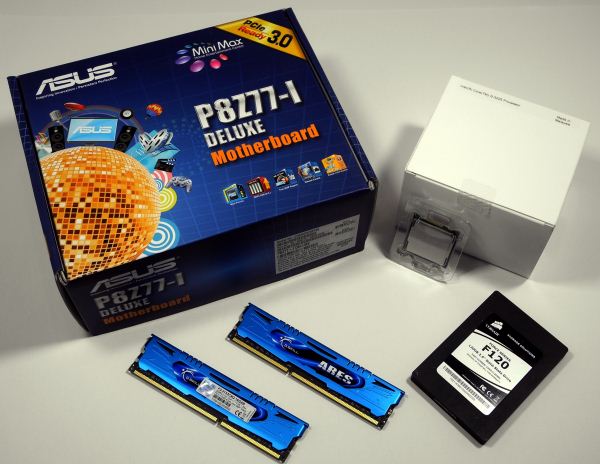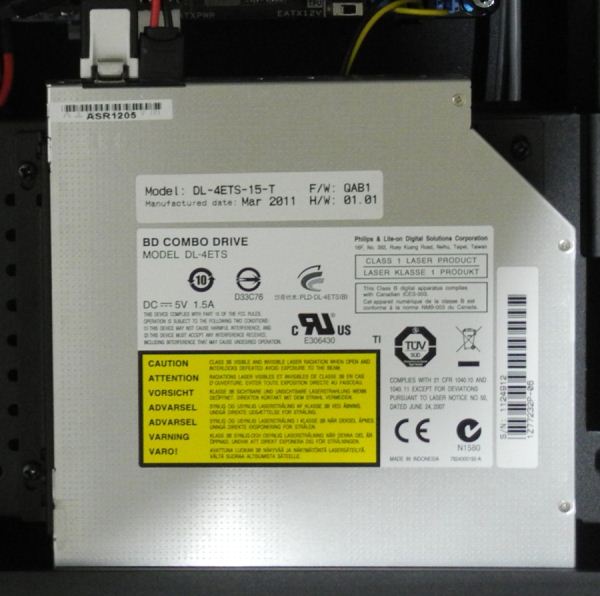Streacom's FC10 and Nano150: Building a Fanless Ivy Bridge HTPC
by Ganesh T S on December 22, 2012 3:30 AM EST- Posted in
- HTPC
- Fanless
- Ivy Bridge
HTPC Testbed Components
In choosing the Streacom FC10 and Nano150 as the chassis and PSU for our testbed, we were practically restricted to a mITX or uATX motherboard. There was a toss up between building a Trinity-based testbed and a Ivy Bridge-based testbed. In the end, the fact that Trinity emerged as being a capable madVR candidate (with software based decoding), and the fact that madVR recently introduced DXVA scaling (an upside for Intel since its offerings weren't fully madVR capable earlier, and something that we wanted to test out) persuaded us to go for an Intel-based testbed.
Processor:
Intel's best GPU offering to date is the HD 4000, and the cheapest Ivy Bridge with the HD 4000 GPU is the Core i3-3225. The Core i3-3225 is a 2C/4T processor with a 55W TDP. It has a 3 MB L3 cache, and can run at 3.3 GHz. The HD4000 runs at 650 MHz by default, but, can turbo up to 1050 MHz when necessary. Like all other Ivy Bridge processors, we have support for DDR3-1600 memory.
Motherboard & Chipset:
The Asus P8Z77-I Deluxe is a Z77-based mITX motherboard with integrated dual-band Wi-Fi / Bluetooth and plenty of HTPC oriented features with Wi-Fi GO!, including the ability to interact with the PC using a mobile device, making it act as a DLNA media hub and so on. This video from Asus captures the capabilities included in the Wi-Fi GO! feature. Ian will be presenting a detailed review of the P8Z77-I Deluxe. However, in the context of our HTPC testbed, the motherboard fulfills all our primary requirement that at least one free PCIe slot be available for installation of a discrete GPU at a later point in time.
Asus also has a Wi-Di enabled model with an Intel Wi-Fi adapter instead of the Broadcom-based one in the P8Z77-I Deluxe.
Memory:
We had used the G.Skill Ares kit in our Trinity HTPC testbed, and given the fact that it can run even at 2133 MHz, we decided to use the same model for this system build also. As a refresher, the DRAM runs with a 9-11-10-28 latency configuration. We also decided to use only one module to give the system 4 GB of DRAM. The reason to not go in for 8 GB will be made clear in the next section.
Primary & Optical Disk Drives:
We used one of the old SSDs lying around, the Corsair F120 120GB. Our intent was to use the SSD only for the OS and program files, and leave all the media on a NAS in another location. Installing a hard drive for increased capacity was ruled out because we wanted a silent HTPC.
One of the constraints posed by the FC10 chassis was the fact that we could only use a slot-loading optical drive. Despite the fact that we wanted a silent system, we did make one concession and decided to install a ODD in the system. Some of our ASRock HTPC samples are now being used as headless systems for network testing, and we decided to take out a Blu-ray drive (Philips Lite-On DL-4ETS) from one of those and use it in our HTPC testbed.


















63 Comments
View All Comments
Hardcore69 - Saturday, December 22, 2012 - link
I built myself an Antec ISK HTPC, then promptly replaced with a WD Live Gen 3 less than 3 months later, which plays back 99% of whatever else you need played back. No mess and no fuss. The reason companies barely focus on anything HTPC is that it is only for the hardest of the hardcore geeks and also completely unnecessary.Death666Angel - Saturday, December 22, 2012 - link
So, your WD Live Gen 3 plays games as well? Great, hit me a link and I'll buy one!Gigaplex - Sunday, December 23, 2012 - link
You want a media player that does games too? Try a console like a PS3.Sivar - Tuesday, January 1, 2013 - link
PS3s and X-Boxes are nearly useless as media players because they don't play MKV files.The formats the consoles do play do not support subtitles so those subtitles need to be stored as a completely separate file, kept in the same folder as the video file, and make a bit of a mess. Lack of MKV support is an instant cross-off when even $40 Android-based media players support it.
Cardio - Saturday, December 22, 2012 - link
Even with the discount from the MSRP of $430. If you add some necessary add-on's the price is $511.50 + shipping. That is really absurd as far as I am concerned. The size is also just too large for somethiing you intended to use as an mini ITX HTPC or even a mATX. What is the attraction here? Silent is just not that hard to achieve. Cooling doesn't have to be passive either. Have made a number of HTPC's that are inaudable and run much cooler that this thing.ganeshts - Saturday, December 22, 2012 - link
It is all a matter of perspective and styling. What is silent to me and you needn't be silent to someone with very sensitive ears. The size of the FC10 is no different from any other A/V component in the rack (say, an AV receiver)colonelciller - Sunday, December 23, 2012 - link
I agree completely on the case size... there is a new case in the pipeline from Streacom that is way smaller while still being passively cooled. I'm waiting on that one :)Aikouka - Sunday, December 23, 2012 - link
Streacom already has a smaller and silent case called the FC8 Evo. I know because I own one! ;)bse8128 - Saturday, December 22, 2012 - link
Could you please add a version of the image with temperature in Celsius which at least 90% of the world population uses? Thanks!ganeshts - Saturday, December 22, 2012 - link
Sure, will do that in the second part of the series.